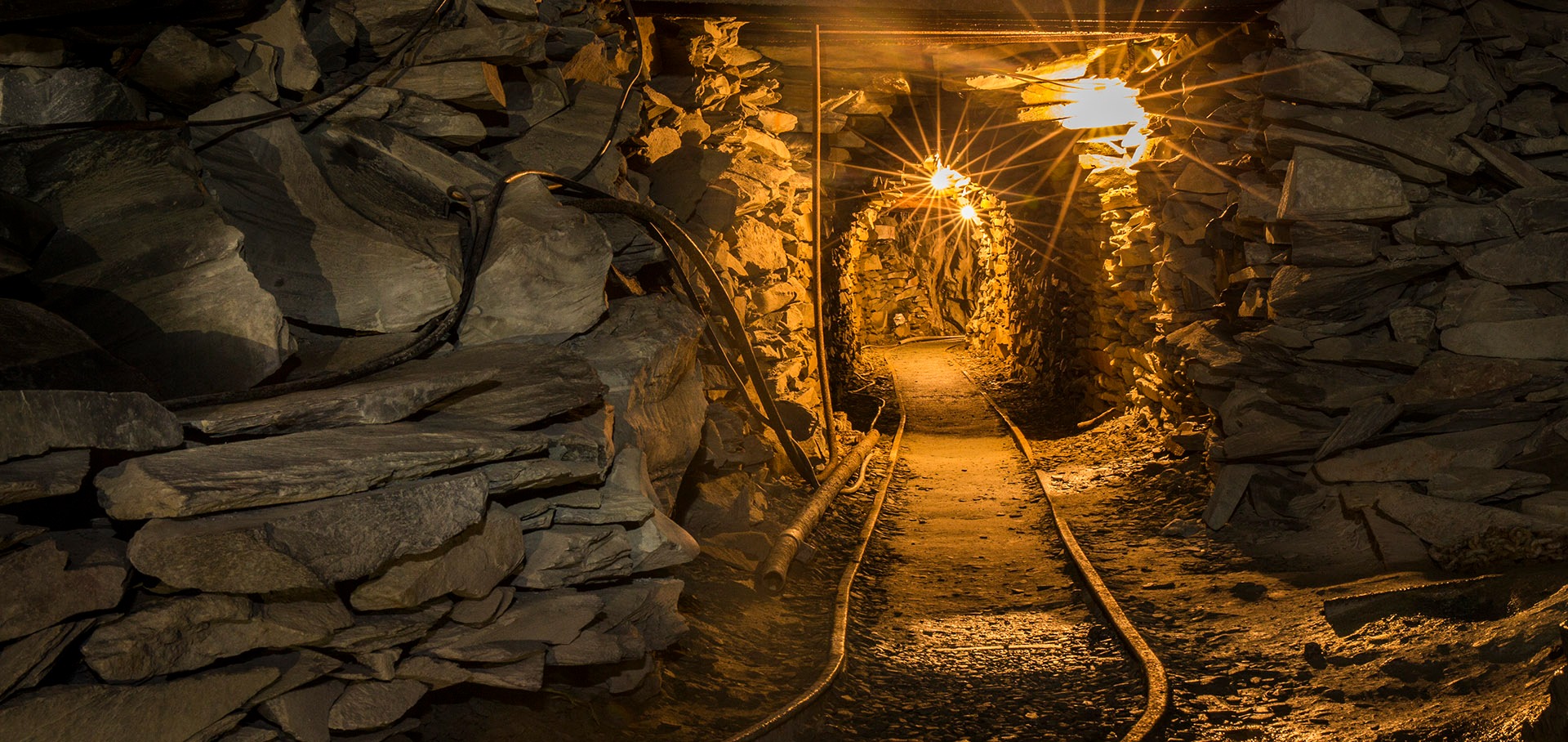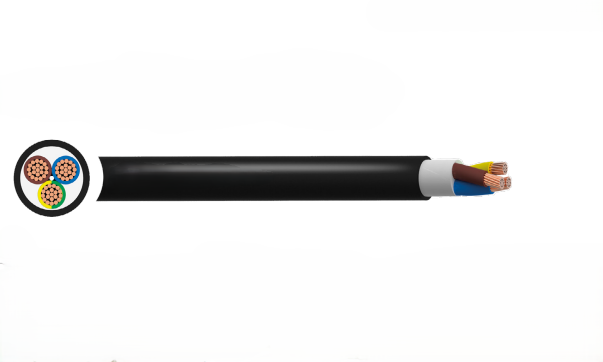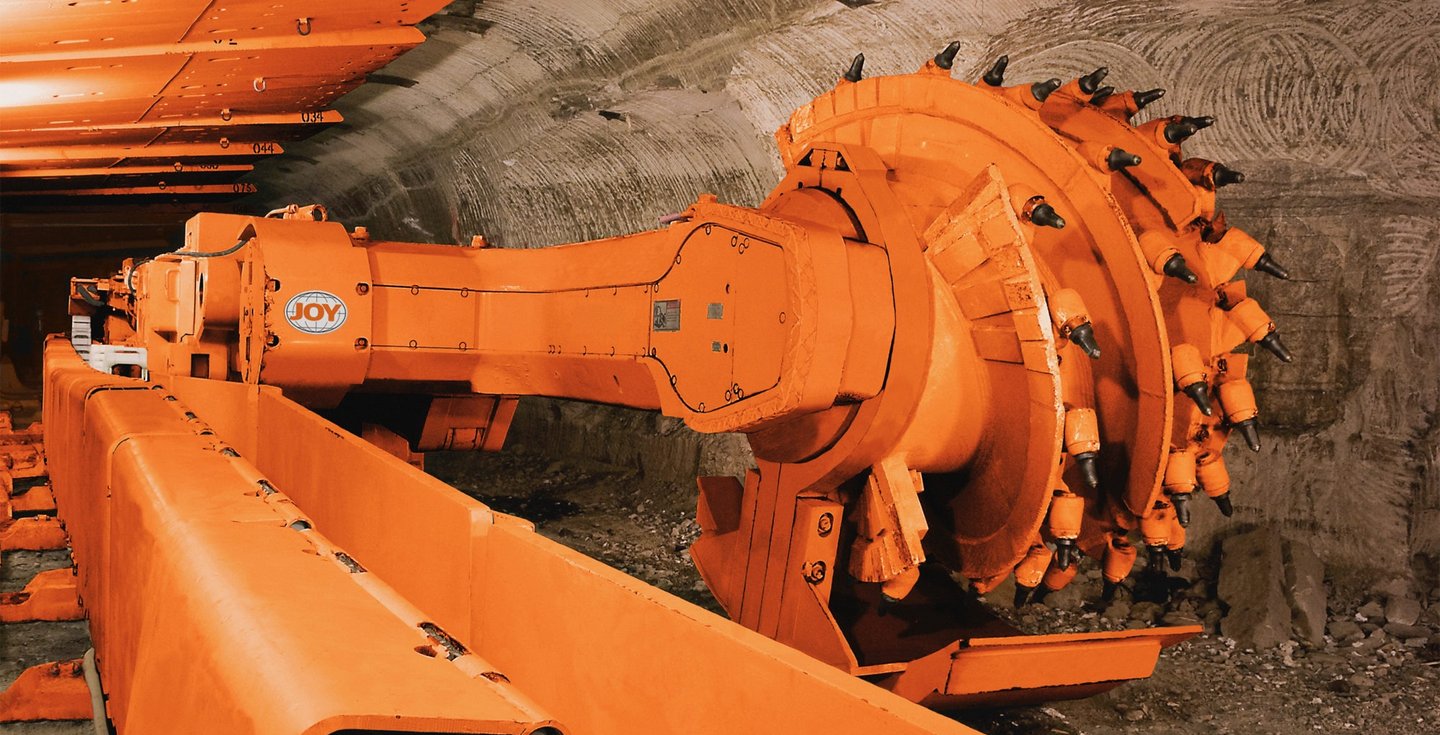Understanding the (N)SHÖU O/J 0.6/1kV Cable
The (N)SHÖU O/J 0.6/1kV cable represents a specialized solution engineered for some of the most demanding electrical applications in industrial environments. This heavy-duty rubber-sheathed cable stands as a testament to modern cable engineering, designed specifically to withstand the harsh conditions found in mining operations, quarrying sites, and heavy industrial facilities. What makes this cable particularly noteworthy is its dual nature as both a robust power transmission medium and a flexible solution for mobile equipment. Unlike standard electrical cables that might fail under extreme mechanical stress or environmental conditions, the (N)SHÖU O/J cable incorporates advanced materials and construction techniques that enable it to perform reliably in environments where conventional cables would quickly deteriorate. The importance of this cable in industrial and mining sectors cannot be overstated. In these environments, electrical failures don't just mean inconvenience—they can result in costly production shutdowns, safety hazards, and equipment damage. The (N)SHÖU O/J cable addresses these concerns by providing a reliable electrical connection that can withstand the mechanical abuse, chemical exposure, and extreme temperatures commonly encountered in heavy industry.
5/22/20259 min read

Understanding the (N)SHÖU O/J 0.6/1kV Cable
Introduction
The (N)SHÖU O/J 0.6/1kV cable represents a specialized solution engineered for some of the most demanding electrical applications in industrial environments. This heavy-duty rubber-sheathed cable stands as a testament to modern cable engineering, designed specifically to withstand the harsh conditions found in mining operations, quarrying sites, and heavy industrial facilities.
What makes this cable particularly noteworthy is its dual nature as both a robust power transmission medium and a flexible solution for mobile equipment. Unlike standard electrical cables that might fail under extreme mechanical stress or environmental conditions, the (N)SHÖU O/J cable incorporates advanced materials and construction techniques that enable it to perform reliably in environments where conventional cables would quickly deteriorate.
The importance of this cable in industrial and mining sectors cannot be overstated. In these environments, electrical failures don't just mean inconvenience—they can result in costly production shutdowns, safety hazards, and equipment damage. The (N)SHÖU O/J cable addresses these concerns by providing a reliable electrical connection that can withstand the mechanical abuse, chemical exposure, and extreme temperatures commonly encountered in heavy industry.


Applications and Use Cases
Understanding where and how the (N)SHÖU O/J cable excels helps illuminate why its specialized construction is necessary. Think of this cable as the electrical equivalent of heavy-duty work boots—designed to perform in conditions that would destroy ordinary alternatives.
Mining and Quarrying Operations
In open-cast mining and quarrying operations, the (N)SHÖU O/J cable serves as the electrical lifeline for massive equipment operating in some of Earth's most challenging environments. Picture a quarry where heavy machinery operates continuously, crushing rock and moving tons of material. The electrical cables powering this equipment must withstand not only the mechanical vibrations from heavy machinery but also exposure to rock dust, moisture, and extreme temperature variations.
The cable's construction makes it particularly suitable for tunneling sites where space is limited and cables must often be routed through areas where they might come into contact with rough surfaces or experience significant mechanical stress. In underground mining applications, the cable's flame-retardant properties become critically important for safety, while its oil resistance protects against hydraulic fluid leaks from mining equipment.
Material Handling Equipment
One of the most demanding applications for the (N)SHÖU O/J cable is alongside conveyor belt systems. Imagine a conveyor belt system stretching for kilometers, carrying tons of material continuously. The cables powering the motors and control systems for these conveyors must flex repeatedly as the system operates, while simultaneously resisting damage from the abrasive materials being transported.
The cable's flexible construction allows it to bend and flex millions of times without failure, while its heavy-duty outer sheath protects against abrasion from flying debris. This combination of flexibility and durability makes it ideal for powering equipment that experiences constant motion, such as conveyor systems, mobile cranes, and traveling gantries.
Industrial Applications in Harsh Environments
Beyond mining and material handling, the (N)SHÖU O/J cable finds applications in any industrial setting where standard cables would fail. This includes chemical processing plants where cables might be exposed to oils and hydrocarbons, outdoor installations where UV radiation and weather exposure are concerns, and facilities where fire safety is paramount.
The cable's submersible capabilities make it suitable for powering underwater pumps in industrial applications, such as mine dewatering systems or industrial water treatment facilities. Its ability to operate in temperatures ranging from -40°C to +80°C makes it valuable in applications from Arctic mining operations to hot industrial processes.


Electrical Parameters and Performance
To truly understand the (N)SHÖU O/J cable's capabilities, we need to examine its electrical characteristics systematically. These parameters determine not just how the cable performs, but also how safely it can be used in various applications.
Voltage Ratings and Safety Margins
The cable's designation as a 0.6/1kV cable tells us about its fundamental electrical capabilities. The notation "0.6/1kV" refers to the voltage between any conductor and earth (0.6kV) and the voltage between any two conductors (1kV) under normal operating conditions. This rating system, common in European standards, provides a clear understanding of the cable's intended use in low-voltage power distribution systems.
However, electrical systems don't always operate under perfect conditions. Equipment failures, switching operations, and other electrical events can cause temporary voltage increases. The cable's maximum permissible operating voltages address these scenarios: 0.7/1.2kV for AC systems and 0.9/1.8kV for DC systems. These higher ratings provide a safety margin that prevents cable failure during abnormal operating conditions.
The AC test voltage of 3kV represents the cable's ability to withstand high-voltage testing, which is performed to verify insulation integrity. This test voltage is five times the normal operating voltage, providing confidence that the cable's insulation system will perform reliably throughout its service life.
Temperature Performance
Temperature performance often determines where and how cables can be used. The (N)SHÖU O/J cable's temperature ratings reflect its versatility across different installation types. For fixed installations, the cable operates from -40°C to +80°C, while mobile applications are limited to -25°C to +80°C.
This difference in temperature ratings illustrates an important principle in cable engineering. Fixed installations generally experience less mechanical stress, allowing the cable materials to maintain their properties across a wider temperature range. Mobile applications, where the cable experiences repeated flexing and movement, require more conservative temperature limits to ensure long-term reliability.
The maximum short-circuit temperature of +250°C represents the cable's ability to withstand the intense heat generated during electrical faults. During a short circuit, enormous currents can flow for brief periods, generating enough heat to damage or destroy inadequate cables. The (N)SHÖU O/J cable's ability to withstand 250°C ensures that it won't contribute to fire hazards during fault conditions.
Mechanical Characteristics
The cable's mechanical properties often matter more than its electrical properties in harsh industrial environments. The maximum tensile load of 15 N/mm² indicates the cable's resistance to pulling forces, which is crucial during installation and in applications where the cable might experience tension during operation.
The minimum bending radius specifications, following DIN VDE 0298 Part 3, ensure that the cable can be installed and operated without damaging its internal structure. A smaller bending radius allows for more compact installations but requires more sophisticated cable construction to prevent conductor damage or insulation failure.


Construction Details and Materials
The (N)SHÖU O/J cable's performance capabilities stem directly from its sophisticated construction. Each component serves specific purposes, and understanding these components helps explain why this cable can perform where others fail.
Conductor Design
At the cable's heart lies the conductor system: electrolytic stranded plain copper wire conforming to Class 5 flexibility standards. This designation is more significant than it might initially appear. Class 5 conductors use many fine copper strands rather than fewer thick strands, providing the flexibility necessary for mobile applications while maintaining excellent electrical conductivity.
The use of electrolytic copper ensures high purity, which translates to lower electrical resistance and reduced heat generation during operation. The stranded construction allows the conductor to flex repeatedly without work-hardening and eventual failure, which would occur with solid conductors in mobile applications.
Insulation System
Each conductor receives individual insulation using 3GI3 compound, a specialized rubber formulation designed for electrical insulation in demanding environments. This insulation system must perform multiple functions: it must provide electrical isolation between conductors, resist degradation from oils and chemicals, maintain flexibility across wide temperature ranges, and resist mechanical damage.
The choice of rubber-based insulation over alternatives like PVC or polyethylene reflects the cable's intended applications. Rubber compounds maintain their flexibility and electrical properties across wider temperature ranges and provide better resistance to oils and mechanical abuse than many plastic alternatives.
Sheathing System
The cable employs a dual-sheath system that provides both protection and performance. The inner sheath uses a special extruded elastomeric compound that provides additional mechanical protection for the insulated conductors while helping to maintain the cable's round cross-section under mechanical stress.
The outer sheath represents the cable's primary defense against environmental hazards. The heavy-duty elastomer compound designated as 5GM5 provides resistance to abrasion, cuts, oils, hydrocarbons, UV radiation, and weather conditions. The availability in yellow or black colors serves practical purposes: yellow for high visibility in safety-critical applications, and black for UV resistance in outdoor installations.


Standards Compliance
The cable's compliance with numerous standards isn't just about meeting regulations—it's about ensuring performance and safety across different aspects of the cable's operation. The construction standards (DIN VDE 0250-812 and 0250-1) specify how the cable must be built to ensure consistent performance. Electrical testing standards (DIN VDE 0472-501, 503, 508) verify that the cable meets its electrical performance specifications.
The flame retardant certifications (VDE 0482-332-1-2, DIN EN 60332-1-2, IEC 60332-1) ensure that the cable won't contribute to fire spread in the event of electrical faults. The oil resistance certification (HD/EN/IEC 60811-2-1) confirms the cable's ability to resist degradation when exposed to petroleum products and other industrial chemicals.



Frequently Asked Questions
Understanding common questions about the (N)SHÖU O/J cable helps clarify its capabilities and appropriate applications.
Can this cable be used for submersible applications?
Yes, the (N)SHÖU O/J cable is indeed suitable for powering submersible pumps and can operate effectively in environments with water presence. This capability stems from its rubber insulation and sheathing system, which provides excellent moisture resistance. The cable adheres to standards like UNE-HD 60364-5 AD-8 for immersion applications, ensuring that it maintains electrical integrity even when submerged. This makes it particularly valuable for mine dewatering systems, industrial water treatment applications, and other scenarios where electrical equipment must operate underwater.
How does the cable perform in extreme temperatures?
The cable demonstrates remarkable temperature performance across its specified ranges. For fixed installations, it operates effectively from -40°C to +80°C, while mobile applications are rated for -25°C to +80°C. The lower temperature limit for mobile applications reflects the additional mechanical stress that moving cables experience, which can affect material properties at extreme cold temperatures. The rubber compounds used in the cable's construction maintain their flexibility and electrical properties across these temperature ranges, ensuring reliable performance in both Arctic mining operations and hot industrial environments.
What mechanical protections does the cable offer?
The cable's mechanical protection system is comprehensive and multi-layered. The heavy-duty elastomer outer sheath provides the primary defense against physical damage, offering resistance to abrasion from rough surfaces, cuts from sharp objects, and crushing forces from heavy equipment. Additionally, the sheath resists oils and hydrocarbons that might degrade other cable types, and it provides protection against UV radiation and general weather exposure. This combination of protections makes the cable suitable for the most demanding industrial environments where mechanical abuse is common.
Is the cable flame retardant?
Yes, the cable meets stringent flame retardant standards including IEC 60332-1, DIN EN 60332-1-2, and VDE 0482-332-1-2. These certifications ensure that the cable will not contribute to fire propagation in the event of electrical faults or external fire exposure. The flame retardant properties are built into the cable's materials rather than being applied as coatings, ensuring long-term effectiveness. This characteristic is particularly important in underground mining applications and industrial facilities where fire safety is critical.
Can the cable be used in oil-rich environments?
Absolutely. The cable is specifically designed to resist oil and hydrocarbon exposure, making it ideal for applications in petrochemical facilities, mining operations with hydraulic equipment, and industrial environments where oil contamination is common. The cable meets oil resistance standards HD/EN/IEC 60811-2-1 and DIN VDE 0473-811-2-1, which verify its ability to maintain performance when exposed to various petroleum products and industrial oils. This resistance prevents the cable sheath from swelling, cracking, or degrading when exposed to these substances.
Conclusion
The (N)SHÖU O/J 0.6/1kV cable represents a sophisticated engineering solution for electrical power distribution in the most challenging industrial environments. Its combination of electrical performance, mechanical durability, and environmental resistance makes it indispensable for mining operations, heavy industry, and other applications where standard cables would quickly fail.
The cable's success lies in its holistic design approach, where every component—from the flexible copper conductors to the heavy-duty elastomer sheath—contributes to overall performance. The extensive compliance with international standards ensures not only regulatory acceptance but also consistent performance and safety across diverse applications and geographic regions.
For engineers and facility managers working in harsh industrial environments, the (N)SHÖU O/J cable offers the reliability and durability necessary to maintain operations in conditions that would compromise lesser cables. Its ability to perform reliably in extreme temperatures, resist mechanical damage, and maintain electrical integrity in the presence of oils, chemicals, and moisture makes it a valuable investment in operational continuity and safety.
Understanding this cable's capabilities and proper applications enables informed decisions about electrical infrastructure in demanding environments, ultimately contributing to safer, more reliable industrial operations.
